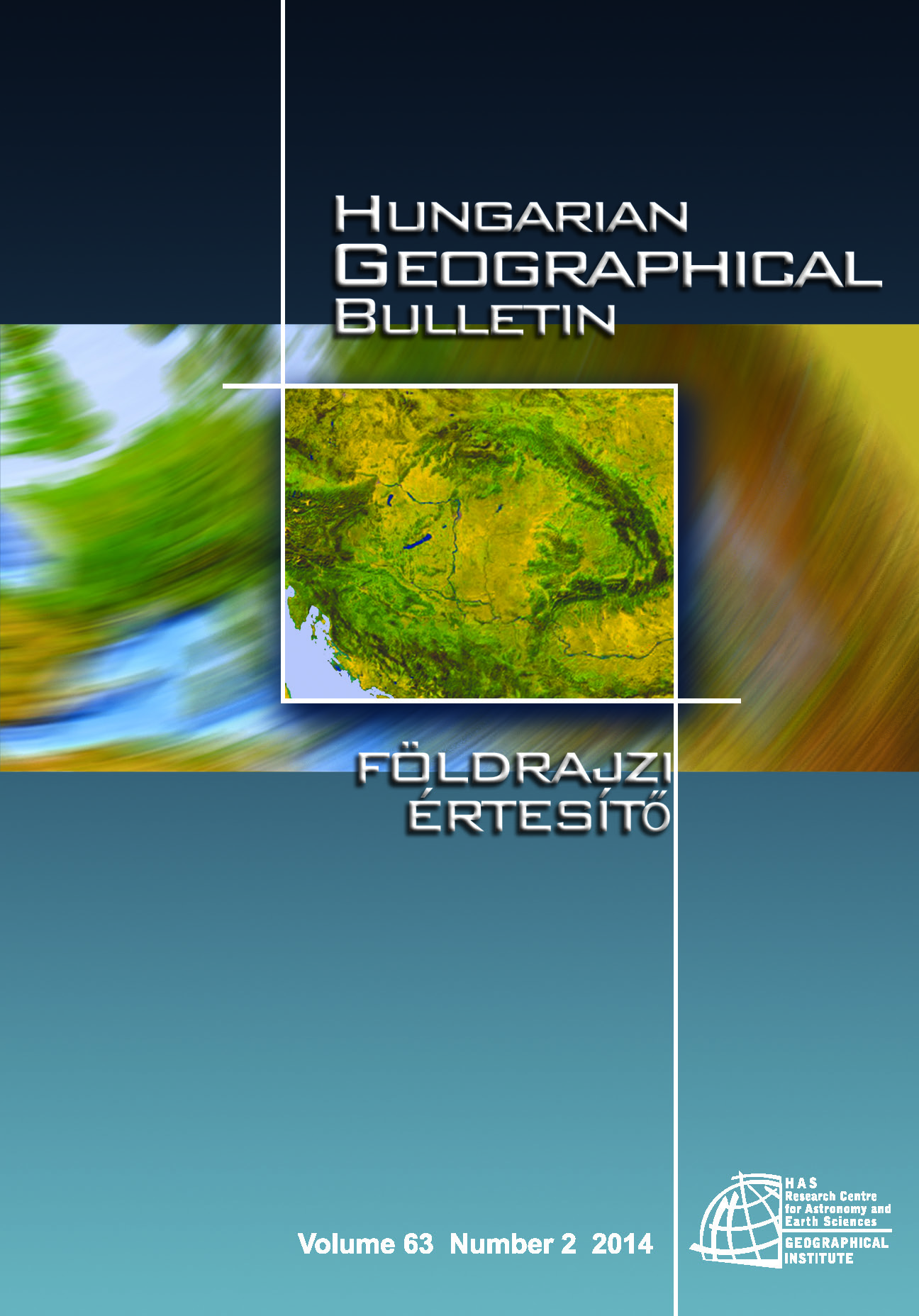The geographical position, system and modelling of golf tourism
Abstract
This paper aims to present the spatial assumptions related to the tourism theory and the geographical correlations of golf tourism. It att empts to defi ne the concept and to study golf as a tourism product in a systemic approach: it presents its internal and external environment. In the fi rst place, golf courses being the most important factor of golf tourism and the interconnection of other supply elements are discussed. In the second place, the paper highlights the role of the intermediary sector specialised in satisfying golf-related special needs. In the third place, it describes the characteristic features of golf demand. It presents the Western European, Mediterranean and Central European regions (the most preferred areas of research), and it establishes the theory of ABC golf destinations in the Mediterranean region, i.e. tourism supply elements in a unique spatial arrangement. The research results include the interpretation of Maslow's hierarchy of motivational needs from the golfers' approach, which helps us understand the golfers' decision-making process and the stages thereof. Based on the theory, the author establishes the golf ball model of the interconnected material conditions of tourism in which the layers of the basic, infra- and suprastructure required for golf tourism are interconnected like the concentric shells of a sphere.
References
Aubert, A. 2001. A turizmus és a területfejlesztés stratégiai kapcsolata Magyarországon (The relationship between tourism and regional development in Hungary). Turizmus Bulletin 5. (1): 44-49.
Aubert, A. 2011. Turizmus trendek és térszerkezet Magyarországon (Tourism trends and the spatial structure of tourism in Hungary). Pécs, Publikon Kiadó, 143 p.
Baráth, K., Széles, J. and Kálmán, E. 2011. A magyar golf stratégiai és operatív terveinek változása az olimpiára készülve (Changes in the strategic and operative plans of Hungarian golf in preparation for the Olympic Games). Magyar Sporttudományi Szemle 12. (46): 22 p.
Correia, A. and Pintassilgo, P. 2006. 'The golf players' motivations: the Algarve case'. Tourism and Hospitality Research 6. (3): 227-238. https://doi.org/10.1057/palgrave.thr.6050014
Csapó, J., Savella, O. and Remenyik, B. 2011. Aktív turizmus (Active tourism). In Turisztikai terméktervezés és fejlesztés. Ed. Michalkó, G., Pécs, University of Pécs, 266 p.
EGA European Golf Association, 2013. Figures for 1991-2013. www.ega-golf.ch
Hudson, S. and Hudson, L. 2010. Golf Tourism. Oxford, Goodfellow Publishing Ltd., 286 p.
Kim, S.S., Chun, H. and Petrick, J.F. 2005. Positioning analysis of overseas golf tour destinations by Korean golf tourists. Tourism Management 26. 205-917. https://doi.org/10.1016/j.tourman.2004.04.005
Kiss, R. 2012. A golft urizmus fejlesztésének hatásai a földrajzi környezetre a törökországi Belek térségében (The eff ects of golf tourism development on the geographical environment in the Belek region of Turkey). Földrajzi Közlemények 136. (2): 152-164.
Kiss, R. 2013. A golft urizmus rendszere, a nemzetközi és hazai kereslet-kínálat trendjei és területi vetületei (The system of golf tourism, the trends and regional distribution of international and national supply and demand). Doctoral thesis. Doctoral School of Earth Sciences, Pécs, University of Pécs, 293 p.
Kiss, R. and Rátz, T. 2007. Golf és turizmus - a magyarországi golfpályák összehasonlító elemzése (Golf and tourism - a comparative study of Hungarian golf courses). In Apáczai Napok 2006. Hagyomány és Fejlődés Nemzetközi Tudományos Konferencia. Tanulmánykötet I. Ed.: Lőrincz, I., Győr, Nyugat-Magyarországi Egyetem Apáczai Csere János Kar, 347-364.
KPMG 2008. The Value of Golf to Europe, Middle East and Africa. Budapest, KPMG Advisory. Last download: 24.08.2012 www.golfbenchmark.com
KPMG 2010a. Country Snapshot: Poland. Budapest, KPMG Advisory. Last download: 13.03.2011 www.golfbenchmark.com
KPMG 2010b. Country Snapshot: United Arab Emirates. Budapest, KPMG Advisory. Last download: 13.03.2011 www.golfbenchmark.com
KPMG 2012. Golf participation in Europe 2011. Budapest, KPMG Advisory. Last download: 10.02.2012
Lengyel, M. 1992. A turizmus általános elmélete (The general theory of tourism). Budapest, VIVA Advertising Agency, 212 p.
Michalkó, G. 2002. Az aktív turizmus elméleti megközelítése (A theoretical approach to active tourism). In Aktív turizmus. Ed.: Dávid, L., Debrecen, Didakt Kiadó, 5-16.
Michalkó, G. 2007. A turizmuselmélet alapjai (The foundations of tourism theory). Székesfehérvár, Kodolányi János College, 224 p.
Petrick, J.F., Backman, S.J., Bixler, R. and Norman, W.C. 2001. Analysis of Golfer Motivations and Constraints by Experience Use History. Journal of Leisure Research 33. (1): 56-70. https://doi.org/10.1080/00222216.2001.11949930
Rátz, T. and Kiss, R. 2007. A golfozás mint aktív turisztikai tevékenység Magyarországon (Golf as an active tourism pastime). Magyar Sporttudományi Szemle 7. (27): 22-26.
Rátz, T. and Kiss, R. 2010. The Attitudes and Activities of Hungarian Golfers: An Analysis of Domestic Demand. In III. International Conference "The Role of Tourism in Territorial Development". Eds.: Dombay, S. and Magyari-Sáska, Zs., Cluj-Napoca, Presa Universitară Clujeană, 291-305.
Robinson, T. and Gammon, S. 2004. Sports Tourism: An Introduction. London, Thompson Learning, 248 p.
Szonda Ipsos 2000. A felnőtt lakosság véleménye az aktív üdülési és kulturális tevékenységekről (Opinion of the adult population on active holiday and cultural programmes). Turizmus Bulletin 4. (4): 38-41.
Wilson, J. and Thilmany, D. 2006. Golfers in Colorado: the role of golf in recreational and tourism lifestyle and expenditures. Journal of Travel & Tourism Marketing 20. (3-4): 127-144. https://doi.org/10.1300/J073v20n03_09
Copyright (c) 2014 Róbert Kiss

This work is licensed under a Creative Commons Attribution-NonCommercial-NoDerivatives 4.0 International License.






